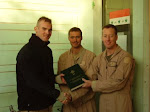The priest celebrating Mass must pray on behalf of the people. He must be as free to pray as is everyone at holy Mass. At the same time as the priest stands before the people on behalf of God He stands before God on behalf of the people. At the heart of the Mass the heart and mind of the priest must be freed for ardent worship of God for the sake of the worship of everyone present and for the whole world.
Through the development of the liturgy in the Church there arose a way of praying which answered the need of the priest to offer his own prayer in communion with and on behalf of the people. This way of praying was symbolized and aided by his posture, that of facing the Lord together with the people, in particular during the Eucharistic prayer of the Mass. This posture is often called "ad orientem", meaning that priest and people together face east, whether actual or symbolic, both to worship the Lord who suffered, died and rose in the East and comes again from the "East" of the altar in every holy Mass.
In the Mass wherein he faces the people nearly throughout the liturgy the prayer of the priest can suffer from the distractions caused by the actions, expressions and movements of others. This militates against his need to be sincerely at prayer in order to lead the prayer of others present. When the priest faces liturgical east, together with the people as they are currently accustomed to doing in every holy Mass, all distractions to prayer are eliminated as he leads the people "forward to the Lord".
An Overlooked But Powerful Reading from the Christmas Cycle
-
There is a Scripture reading proclaimed at the Christmas Liturgy that
usually gets overlooked. And yet it should elicit considerable reflection
since it ...
2 days ago












No comments:
Post a Comment